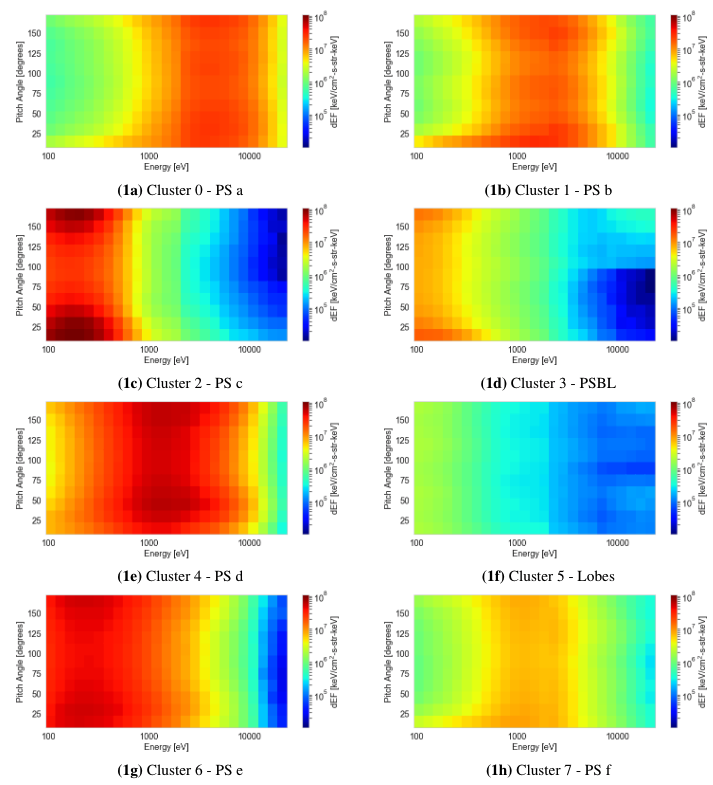MIST
Magnetosphere, Ionosphere and Solar-Terrestrial
Using Dimensionality Reduction and Clustering Techniques to Classify Space Plasma Regimes
By Mayur R. Bakrania (MSSL, UCL)
Particle populations in collisionless space plasma environments are traditionally characterised by their moments. Distribution functions, however, provide the full picture of the state of each plasma environment. These distribution functions are not easily classified by a small number of parameters. We apply dimensionality reduction and clustering methods to particle distributions in pitch angle and energy space to distinguish between the different plasma regions. Dimensionality reduction is a specific type of unsupervised learning in which data in high-dimensional space is transformed to a meaningful representation in lower dimensional space. This transformation allows complex datasets to be characterised by analysis techniques with much higher computational efficiency. We use the following steps:
- An autoencoder to compress the data by a factor of 10 from a high-dimensional representation.
- A Principal Component Algorithm to further compress the data to a three-dimensional representation.
- The mean shift algorithm to determine how many populations are present in the data using this three-dimensional representation.
- An agglomerative clustering algorithm to assign each data-point to one of the populations.
We use electron data from the magnetotail to test the effectiveness of our method. The magnetotail is traditionally divided into three different regions: the plasma sheet (PS), the plasma sheet boundary layer (PSBL), and the lobes. Starting with the ECLAT database with associated classifications based on the plasma parameters, we identify 8 distinct groups of distributions, that are dependent upon significantly more complex plasma and field dynamics. Fig. 1 shows the average electron differential energy flux distributions for each cluster. We see large differences in the average pitch angle/energy distributions. Each distribution differs by the: peak flux energy, peak flux value, or the pitch angle anisotropy. The lack of identical distributions shows mean shift has not overestimated the number of clusters. This novel technique reveals new information on the physical processes shaping magnetotail electron distributions, and has significant implications for analysing a wide range of plasma regimes.

Fig. 1: Average electron differential energy flux distributions as a function of pitch angle and energy for each of the eight clusters (A–H) classified by the agglomerative clustering algorithm. Each cluster is assigned a magnetotail region (included in the sub-captions) based on our interpretation of their plasma and magnetic field parameters.
Please see the paper for full details:
M. R. Bakrania, Rae I. J., Walsh A. P., Verscharen D. and Smith A. W. (2020). Using Dimensionality Reduction and Clustering Techniques to Classify Space Plasma Regimes. Front. Astron. Space Sci. 7:593516. https://doi.org/10.3389/fspas.2020.593516